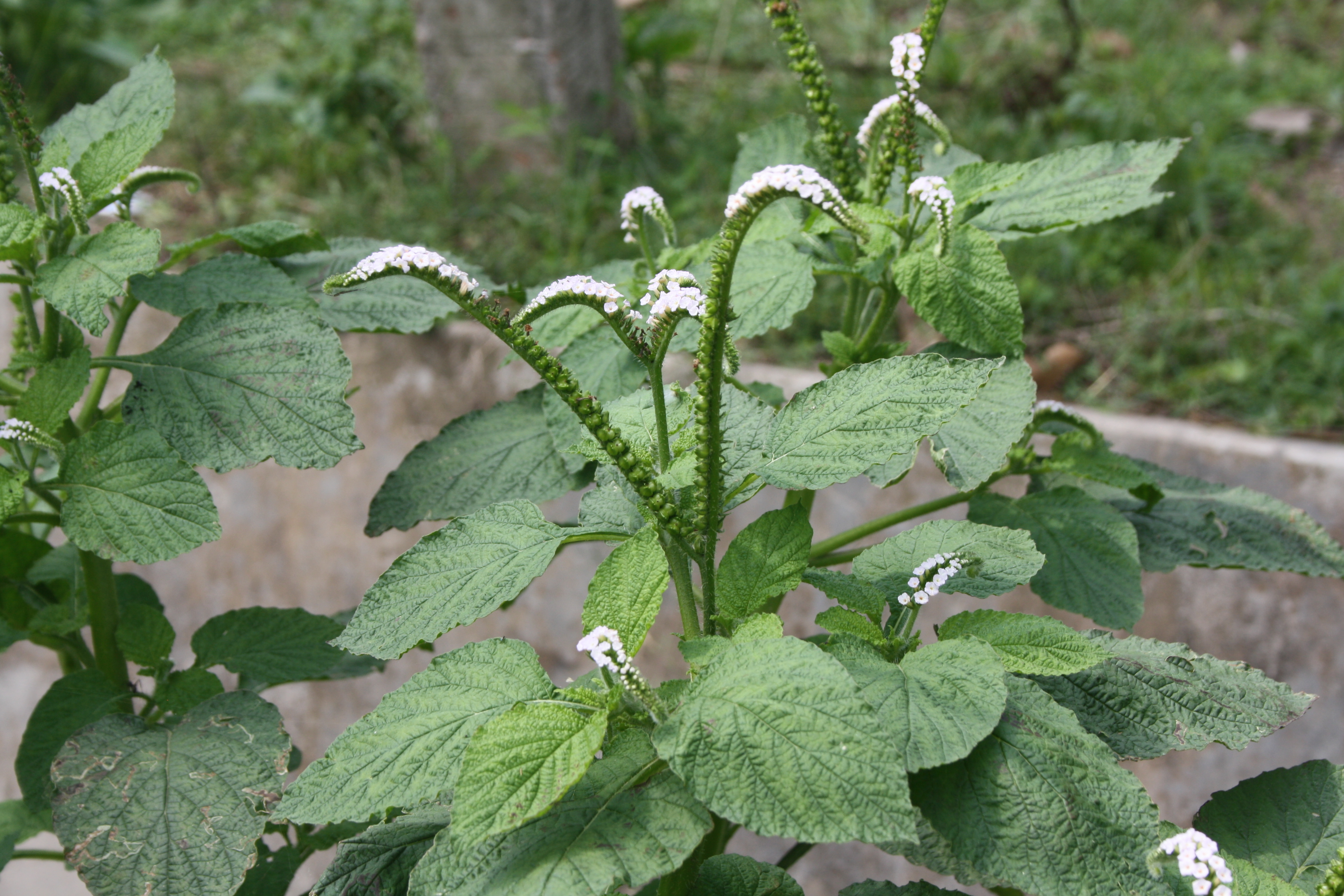

Identification Notes


EPPO CodeHEOIN |
Life CycleAnnual or Perennial |
MorphologyH. indicum is an erect, thick fetid, annual or perennial herb with hirsute ascending branches, reaching between 20 and 60 cm in height. The leaves are opposite or sub-opposite, alternate or sub-alternate and straight forward, sheet-shaped from ovate to elliptical, hairy, and sharp and 5–10 cm long. .e margins of the leaves are undulate; the nerves present on both sides are serrulate or cordate and clearly visible under the leaves. The petiole is about 1–7 cm long, while the flowers progress apically within the cymose; at maturity, nutlets are present at the base of the inflorescence. Generally, flowers are white or whitish violet in color, regular, sessile, axillary, and nearly 5 mm in diameter. Sepals are diffused with hairs outside, deep green in color, linear to lanceolate, uneven or unequal, and about 5–3 mm long. The fruits are dry and 2–4 lobed, with or without united nutlets, and 3–6 mm long. This species grows in sunny places preferring heights around 800 m. [1] |
Growing seasonJanuary - December |
Germination period- |
Flowering periodJanuary - December |
PropagationBy Seed |
HabitatGrows readily in disturbed and waste areas, roadsides, and fallow land. |
Weed potentialPrimarily affects unmanaged areas rather than competing with established, high-yield agricultural crops. |
Control measureManual and Cultural practices |
Recommended herbicide- |
DistributionA pantropical and subtropical distribution, originating from tropical America or Asia |
Medicinal propertiesTraditionally, this plant is widely used against many pathological disorders including wound healing, antidote, bone fracture, febrifuge, cures eye infection, menstrual disorder, nerve disorder, kidney problem, and antiseptic purpose. H. indicum contains many important phytochemicals such as tannins, saponins, steroids, oils, and glycosides. Scientific reports suggest that H. indicum possesses many important pharmacological activities, including antiinflammatory, wound-healing, anticancer, and anticataract activities [1]. |
References[1] Sarkar C, Mondal M, Khanom B, Hossain MM, Hossain MS, Sureda A, Islam MT, Martorell M, Kumar M, Sharifi-Rad J, Al-Harrasi A. Heliotropium indicum L.: from farm to a source of bioactive compounds with therapeutic activity. Evidence?Based Complementary and Alternative Medicine. 2021;2021(1):9965481. https://doi.org/10.1155/2021/9965481 |